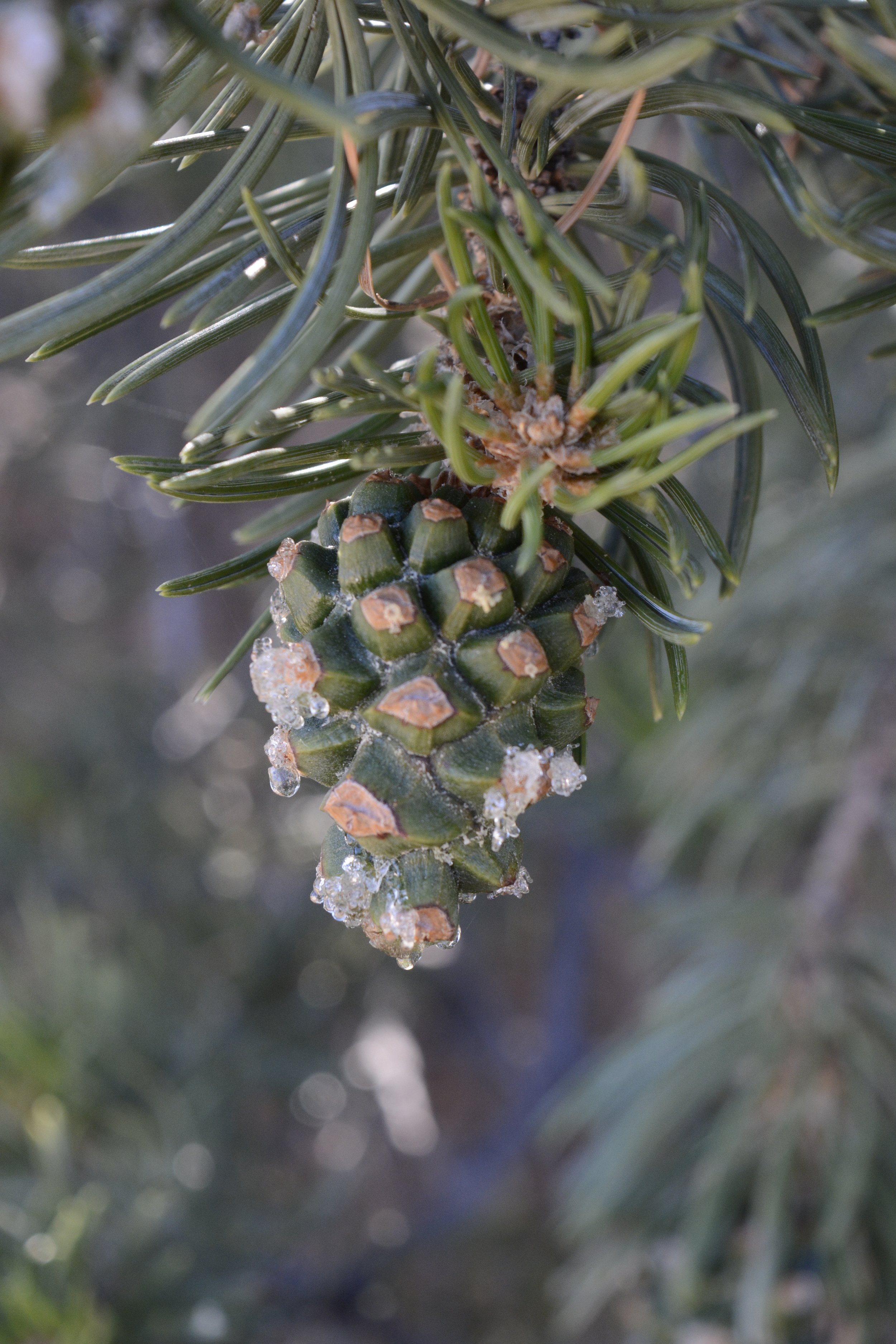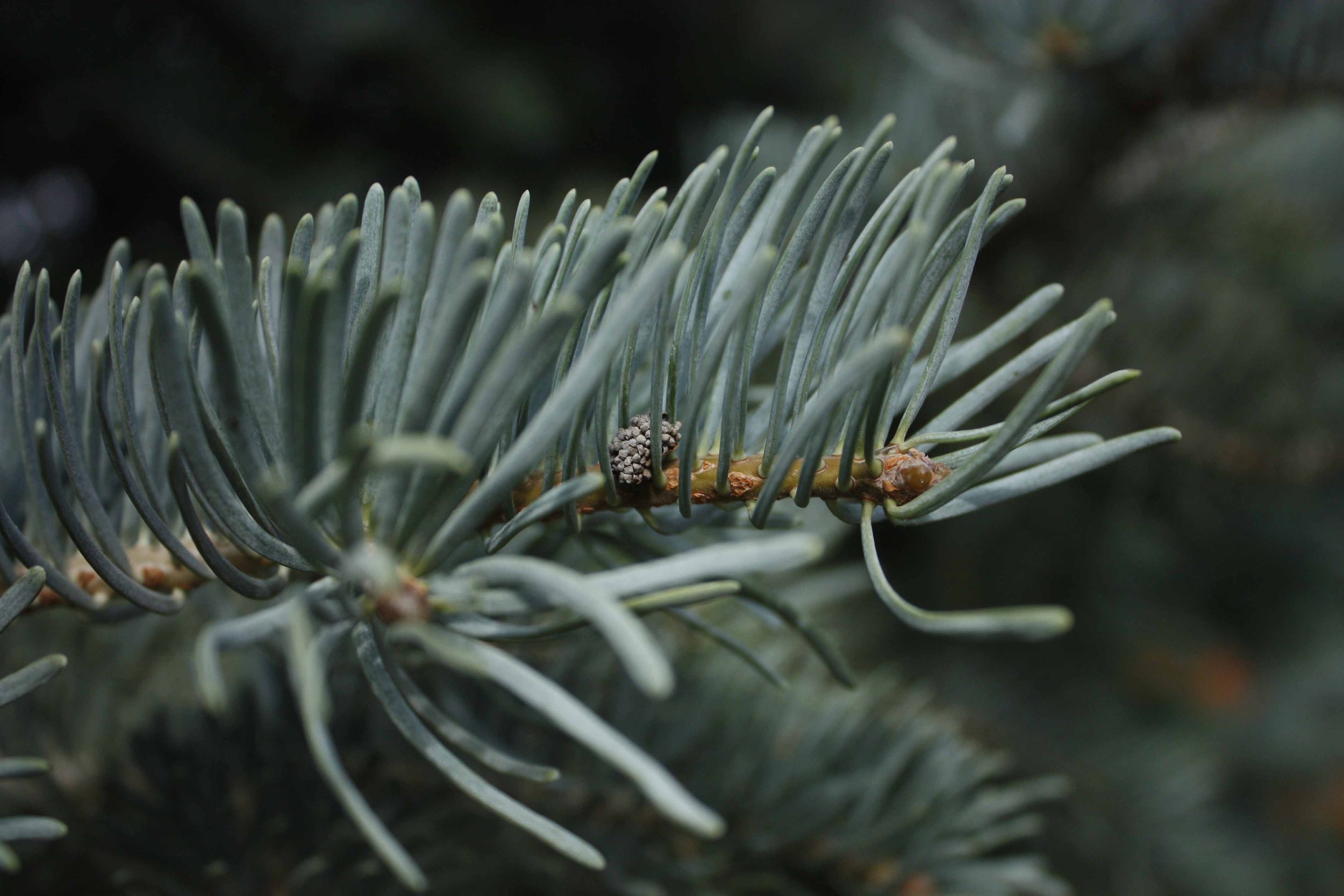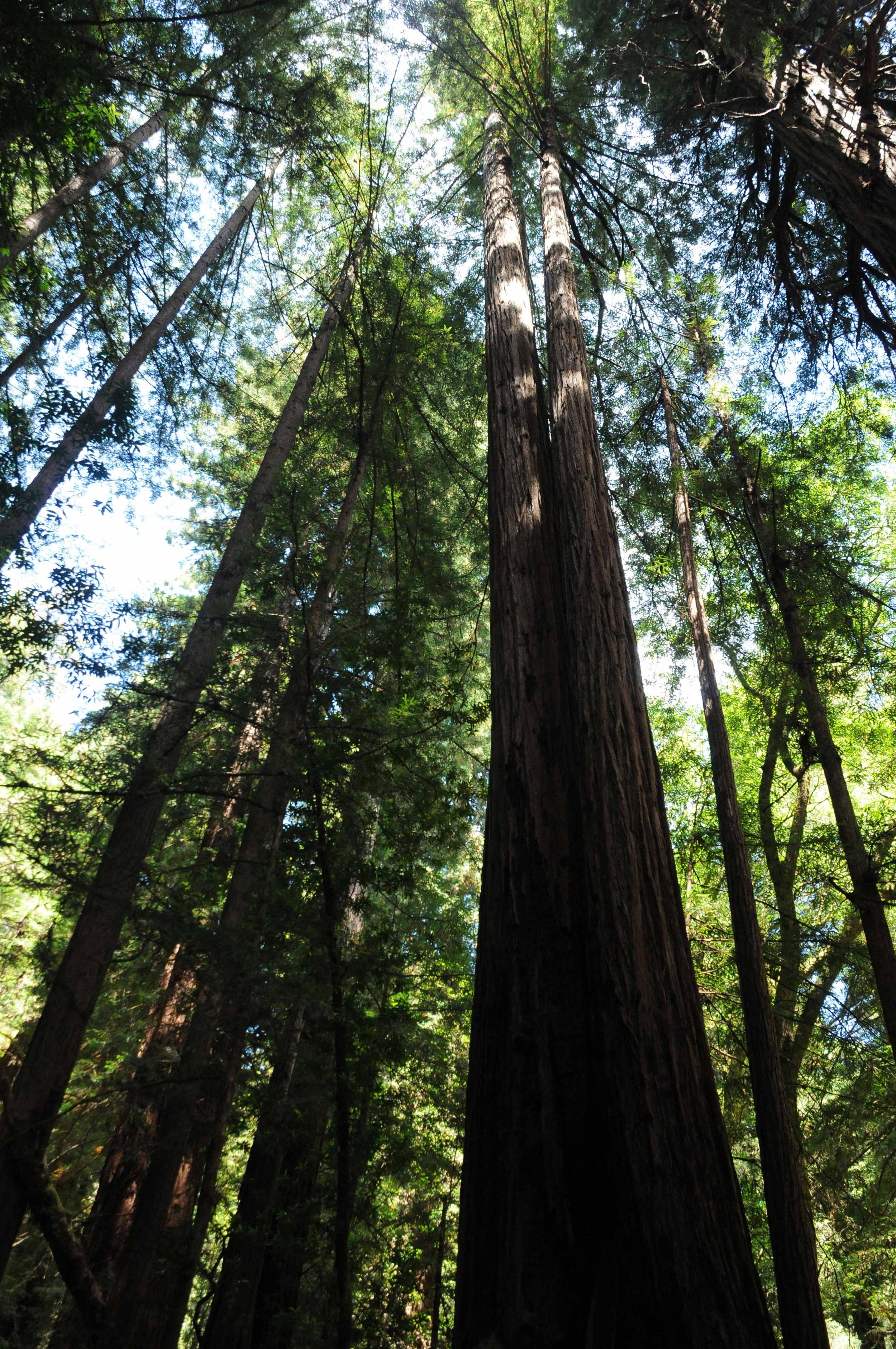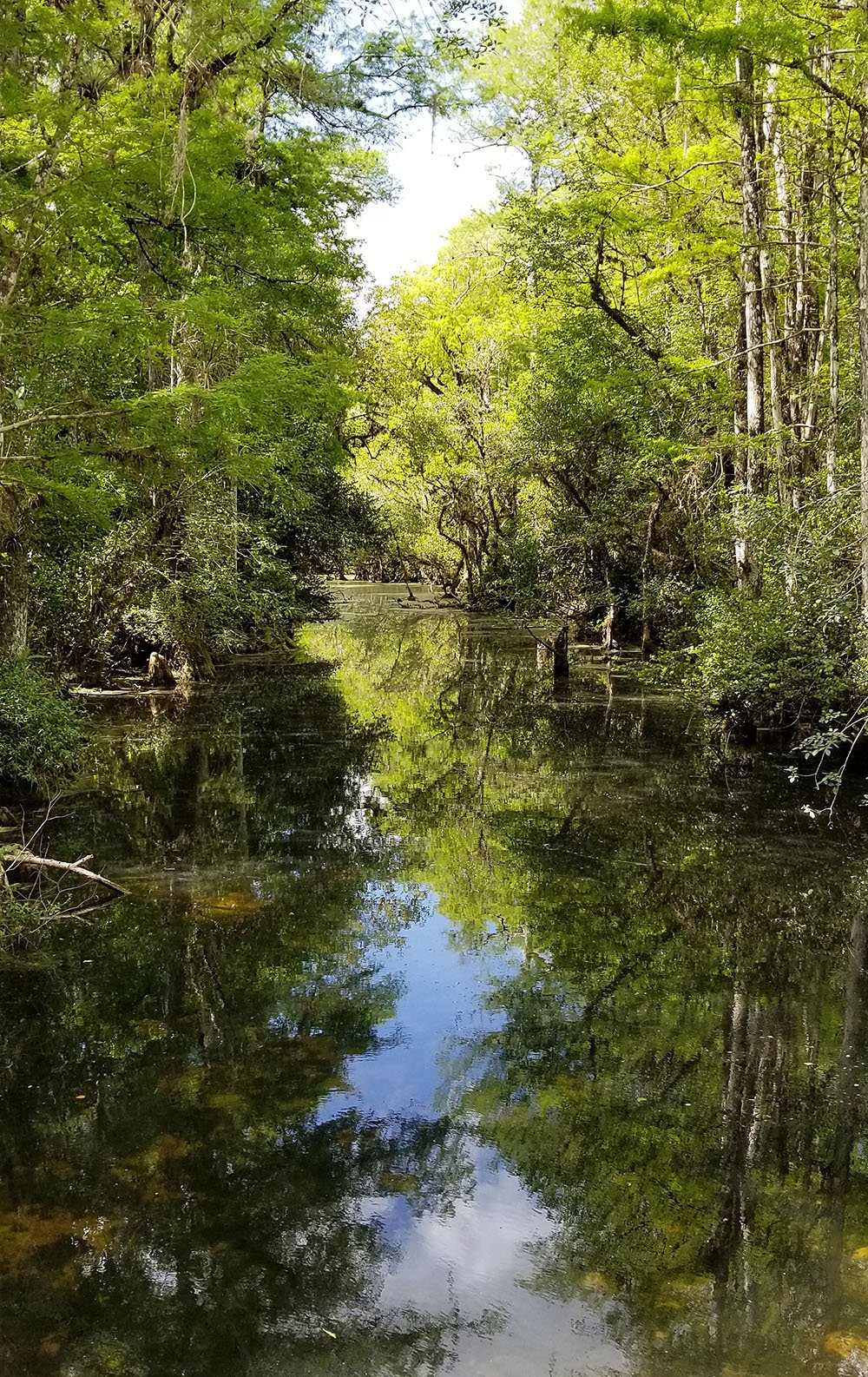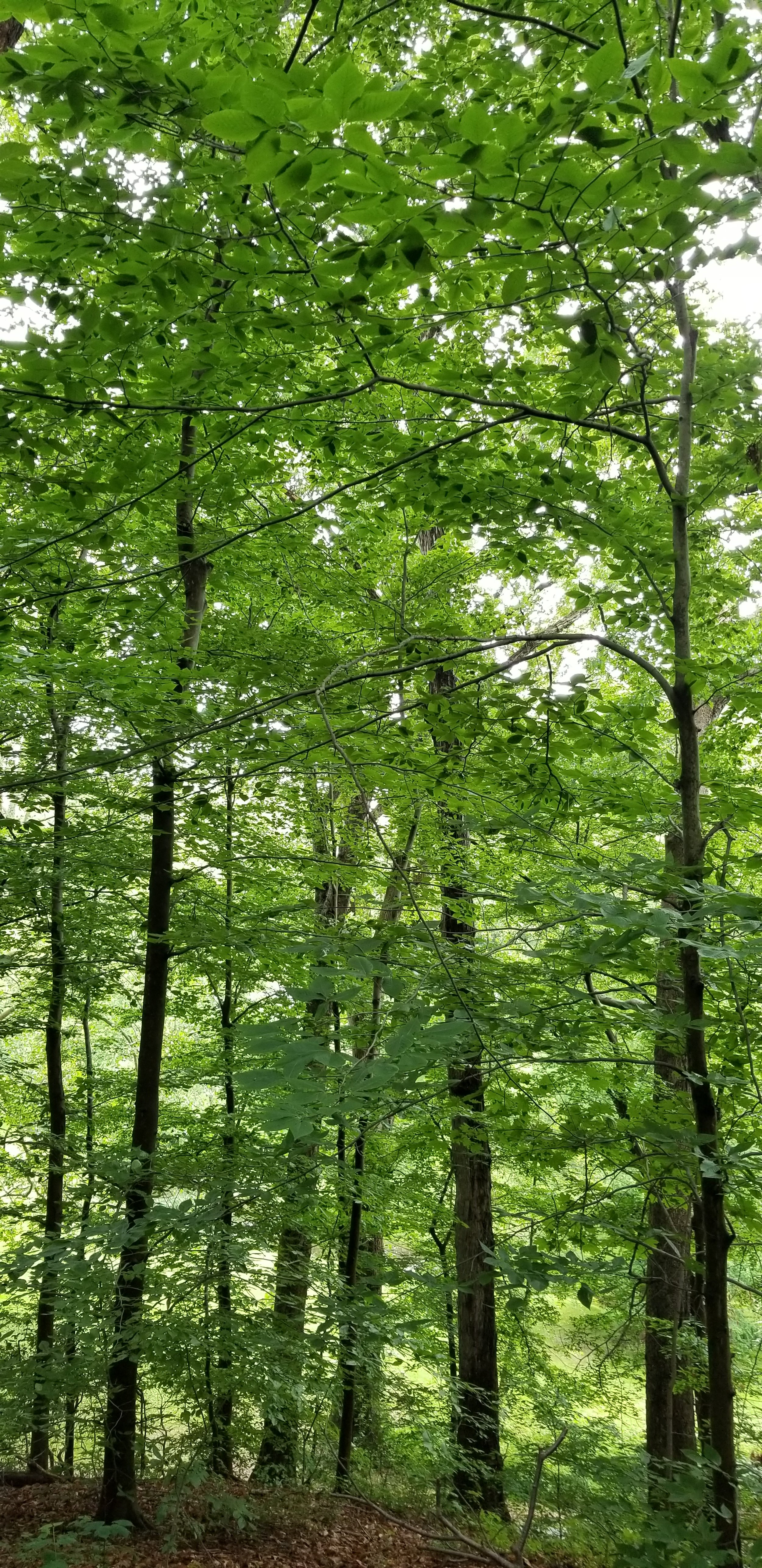Resins: Conifers and Forest Bathing
“Crush the needles and sniff” he said, “tell me which species of pine this is.”
I was in the mountains of northern Utah amidst the rocks, dry grass of summer, dusty soil, sunshine, and pine trees. The memory brings back the sound of wind through needles and the fresh scent of resinous bark. The exact species escapes me but at the time I knew. He was a graduate student in botany, a leader of this field trip I took in college, and a proponent of aromatic botany. The memory is so clear to me, as many scent memories are, and the concept one that I remembered always, taking time to bruise leaves, sniff flowers, and pay attention to scent.
There are places in the American west that blend landscape with the scent of evergreens and stick in my memory. There is the drive along I-70 from Denver to a midpoint along I-15 which runs from Salt Lake City to Las Vegas. Mountain passes with tall pines and aspen trees in northern Colorado give way to lower elevation high desert habitat. It was here on a drive that I pulled over to safely watch a golden eagle soaring on the warm late summer afternoon at the edge between sage desert and pinyon juniper scrub. A path led from the hot dry grasses to mottled shadows under the pines. Cones were dripping resin and the air was fragrant, a sight and scent that took me back to late summers with family under pinyon pines where we collected cones to separate out the tasty pine nuts to roast and eat later. When fresh, they had a distinct touch of resin along with the sweet nutty taste.
As a natural perfumer it was critical that I learn my materials early on and I found that writing about them helped to understand the nuances of aroma from first sniff through the drydown. Many days were spent with paper strips, a timer, and forms where I could write times and perceptions as the scent of an aromatic evolved on the scent strips. I immediately fell in love with a gorgeous deep green pine absolute and wrote: “Oh, the beautiful green absolute! It starts with a dry winey/cognac fragrance accenting the jammy fruity smell of pine needles. There is a fragrance of sweet pitch as well. As it progresses to the middle notes there is a grassy green smell of pine meadows sweet in the sun. The dryout is a lovely sappy pine, light and fresh and just a bit balsamic. The gorgeous green color of my dilution just makes me happy.” Fir balsam absolute is similar but smokier and more resinous—it's my go-to for a deep green perfume note with interest.
Of the essential oils, I was most surprised by templin fir about which I wrote: “Templin fir has one of the most unique opening notes of the essential oils that I know. The first impression is of rich incense that gives way to a balsamic—resinous fragrance after which definite notes of myrrh and spice appear. It continues to be woody and yet incens-y through the heart and lasts a good 45 minutes.”
What does this have to do with forest-bathing? Many of the pines with their abundance of fragrant terpenes may provide healing in the very air you breathe—aromatherapists often recommend pine, eucalyptus, or other terpene- and sesquiterpene-rich essential oils for respiratory health. My experiences with the outdoors lead me to know that the experience of walking within the complex green movement of a forest or woodland recharges my batteries and allows me to think through problems with a new perspective.
The guidelines for forest bathing are simple and can be practiced almost anywhere. Called Shinrin-yoku, it involves finding a space to get outside and in the ‘green’ of nature. It helps if you have some terpene-rich evergreens around for that little boost to your lungs and mood, but you may find a river to walk along with willows overhead, or a city park with an acre or so of green to simply rest your eyes and meditate. In doing this, you probably have walked a good fifteen minutes or so, breathed a little more deeply, and hopefully stopped stressing about deadlines or a undone ‘to do’ list. Your eyes are looking at something besides a screen or four walls and enjoying the complexity of nature. Who knows, you might even take up a hobby like birdwatching or tree identification! However you do it, find your center, experience a bit of peace and calm, listen, and smell, then take that peace home with you.
Photos of inspiring places, plants, and fragrances can be found here.
